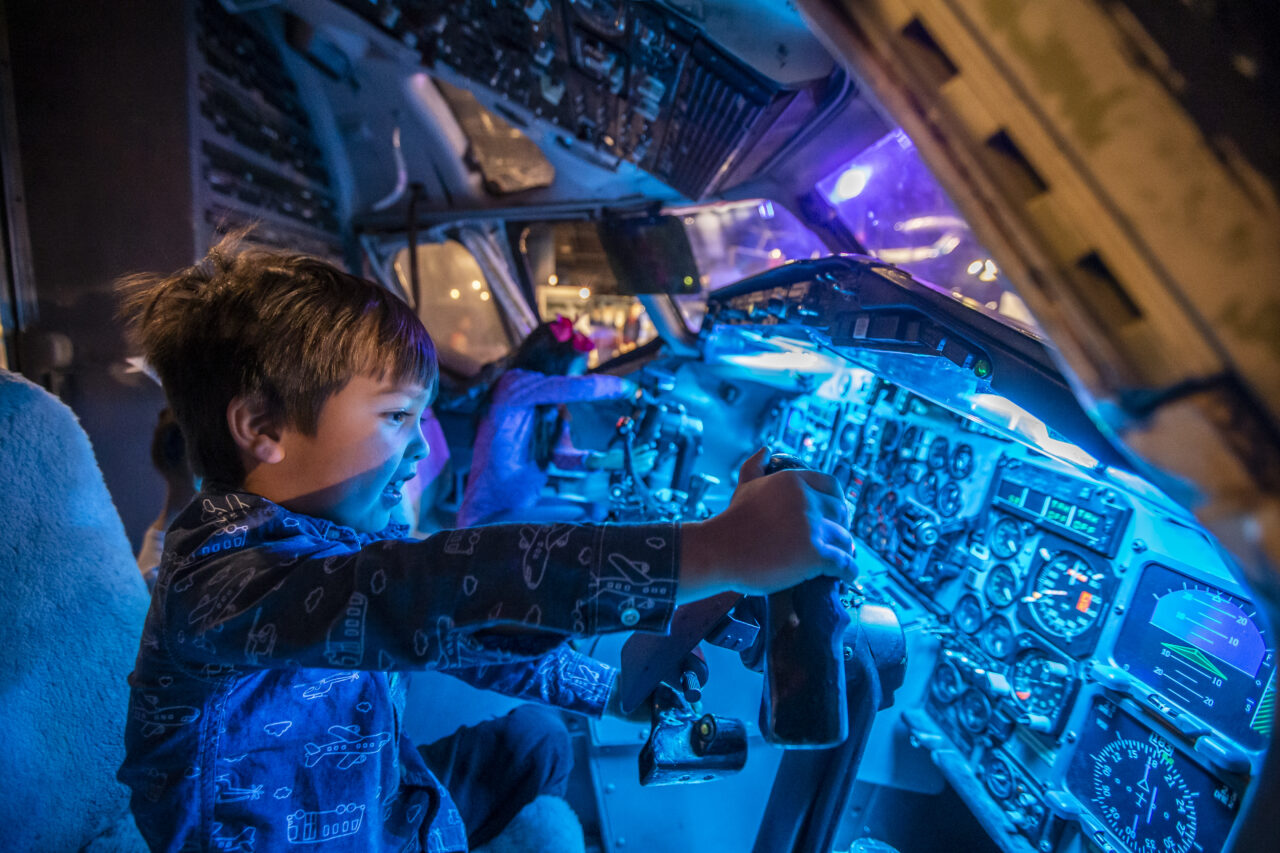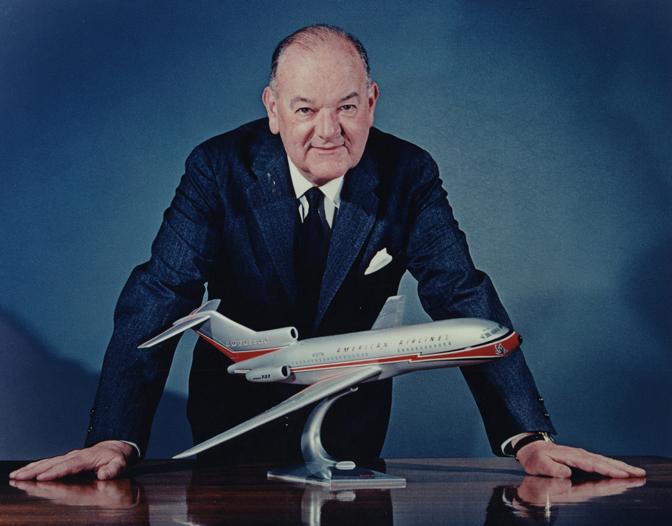About the CR Smith Museum

Our vision
To broaden the aviation community.
Our mission
The CR Smith Museum inspires future aviation professionals of all backgrounds through its confidence-building education programs, exhibitions and heritage collection.
Telling the history of innovation.
The CR Smith Museum is named for the innovative aviation pioneer and former President of American Airlines, Cyrus Rowlett Smith (1899-1990). The Museum opened on July 3, 1993, as the culmination of a two-and-a-half year fundraising and building effort led by American Airlines team members.
The signature piece of the Museum was and is a retired 1940 Douglas DC-3, the aircraft that was developed based on C.R. Smith’s vision and that revolutionized commercial air travel. The “Flagship Knoxville” was purchased by The Grey Eagles, an American Airlines retired pilots group, and restored by retired and active American Airlines team members before being presented to the Museum. In 1999, a custom hangar was added to the Museum to house the DC-3 and protect it from the elements. The “DC-3 Hangar” was made possible by the fundraising efforts of the DC-3 Coalition, a volunteer group headed by former AA Senior Vice President of Field Sales and Services, Otto Becker. The group sold inscribed bricks that make up the floor of the “hangar” to this day.
The CR Smith Museum completed a significant remodel in the summer of 2018. In its new configuration, the Museum explains the inner workings of airline operations and showcases the people who run American Airlines every day. Brand new interactive exhibits entice participation by all age groups. The Museum features hundreds of historical artifacts, photographs, full-scale aircraft engines and a rare 1940 Douglas DC-3 airliner that is accessible to visitors. In addition, the Museum’s 4K digital theater features Why I Fly, a short film that shares the inspirational stories of some of American Airlines team members.
Who was C.R. Smith?
Cyrus Rowlett Smith became president of American Airlines in 1934 at the age of 35. He led American Airlines for the next 34 years and in the process helped to shape the entire airline industry. He was truly an aviation pioneer, entering the airline business in the days of open-cockpit biplanes and later building American from a small and unprofitable carrier into the largest airline in the world.
